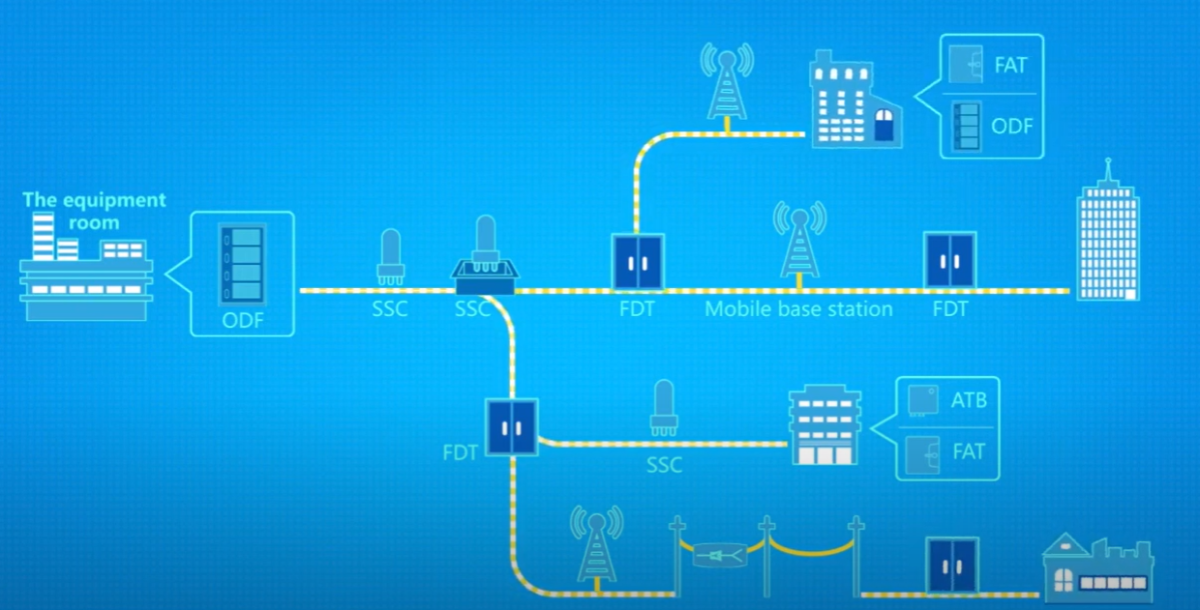What is Optical Distribution Frame (ODF)?
With the rapid growth of network transmission requirements, data center operators must look for high-density cable management equipment that can provide higher performance without expanding to a larger physical space. Optical fiber distribution frame (ODF) as an important optical cable management equipment, is widely used in data centers to store, organize, manage, and protect optical cables. To let you better understand and use optical distribution frame (ODF), this article will explain What is it?
What is the Optical Distribution Frame (ODF)?
Optical Distribution Frame or Fiber Distribution Frame is the full name of ODF/FDF. ODF meaning in telecom is an essential supporting device to terminate and distribute fiber cables in the optical transmission system.
More specifically, it is mainly used for fiber fusion splicing of the optical cable terminal, the installation of optical connectors, the deployment of optical paths, the storage of excess pigtails, and the protection of optical fibers. Hence, functions of fiber connection, termination, distribution, dispatch, and cable management are centralized in one apparatus. The fiber distribution frame is of significance for the safe operation and flexible deployment of optical fiber networks.
The Role of ODF
The optical distribution frame is an important supporting equipment in the optical transmission system. It is mainly used for optical fiber splicing, installation of optical connectors, adjustment of optical paths, storage of redundant pigtails, and protection of optical cable. The safe operation and flexible use of communication networks play an important role. Now optical communication has been widely used in long-distance trunk lines and local network relay transmission, and fiber optics has also become the development direction of access networks. Everywhere in the construction of new optical fiber networks, large-fiber optical cables are used as much as possible, which puts higher requirements on the capacity, function, and structure of optical distribution frames.

Features of Optical Distribution Frame
- Intuitive Cable Routing – ODFs provide clear cable routing paths, reducing installation errors and preventing costly rework. This intuitive design streamlines network management and simplifies troubleshooting.
- Efficient Cable Management – ODFs incorporate advanced cable management features like lockable vertical cable manager doors, minimizing circuit risks and reducing the likelihood of network downtime while keeping cables organized and secure.
- Versatility and Scalability – With multiple cassette options and form factors, ODFs maximize rack space utilization across diverse applications, making them adaptable to the growing needs of high-density networks.
- Cord Consolidation – ODFs enable the standardization of patch cord lengths, which reduces excess inventory, lowers costs, and simplifies overall cable management.
How to choose ODF based on your needs?
Choosing the right Optical Distribution Frame involves considering several factors beyond just structure. Here are some key aspects to guide your selection:
- Fiber Counts – As data centers grow, the demand for high-density ODFs increases. Common configurations include 24, 48, or even 144 ports. Many vendors offer customized ODFs to meet specific needs.
- Manageability – While high density is advantageous, it can complicate management. An optical distribution frame should facilitate easy access to connectors on both the front and rear for smooth insertion and removal. Adequate space is essential, and adapter colors should align with fiber optic connector color codes to prevent errors.
- Flexibility – Rack-mounted ODFs offer flexibility with their modular design. Port size also enhances flexibility. For instance, duplex LC port sizes can accommodate duplex LC, SC, or MRTJ adapters, while ST port sizes can fit both ST and FC adapters.
- Protection – ODFs integrate sensitive fiber connections, such as splicing joints and connectors, critical for network stability and reliability. A quality ODF should include protective measures against dust and stress to safeguard these connections.
Conclusion
The ODF is the most popular and comprehensive fiber optic distribution frame which can reduce the cost and increase the reliability and flexibility of fiber optic network during both deployment and maintenance. The high-density ODF is the trend in the telecommunication industry. Selecting an ODF is important and complex which requires full consideration including applications and management. The factors like structure, fiber counts, and protection are just the basic elements. The ODF which can meet the current requirements and the challenge of future growth and easing of expansion without sacrificing cable management or density can only be selected with repeated comparison and full consideration.